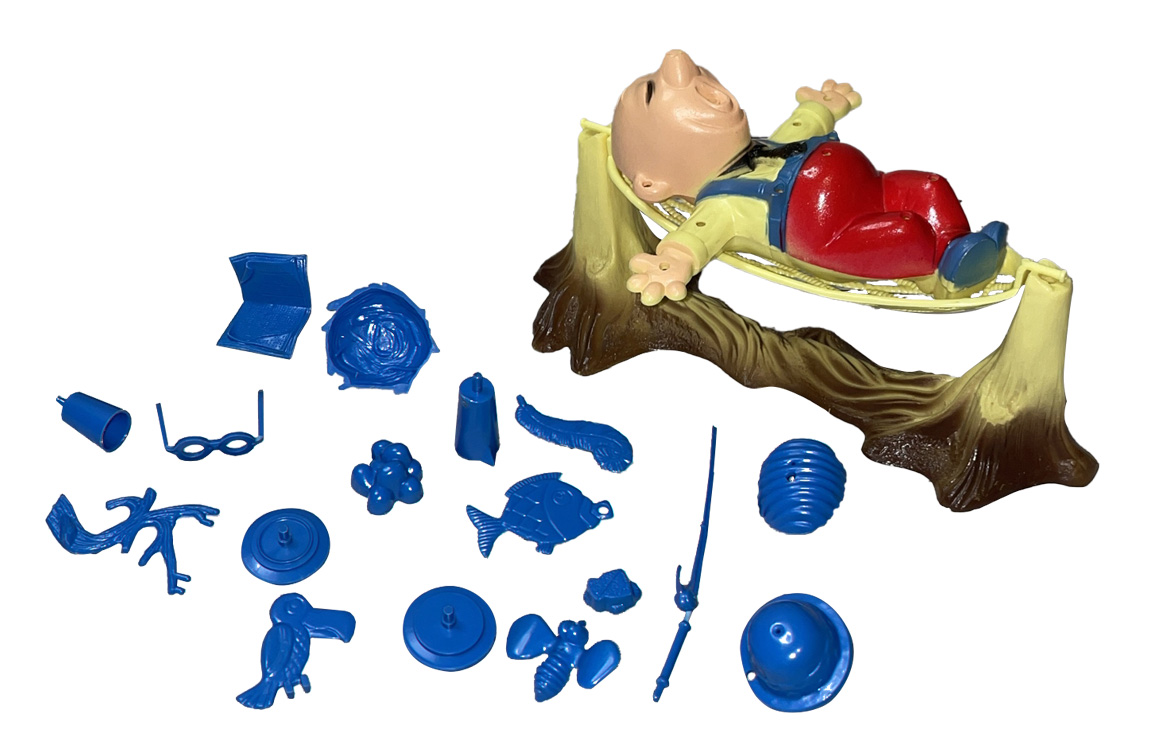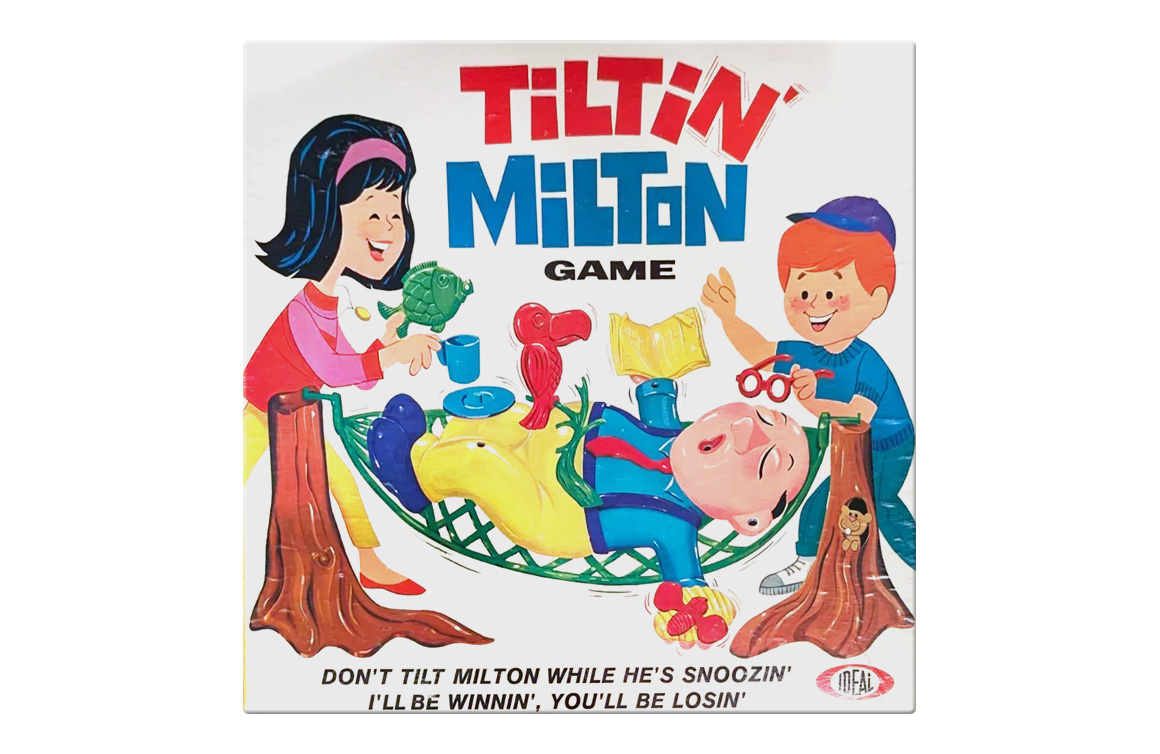Don’t tilt Milton while he’s snoozin’ …
… I’ll be winnin’, you’ll be losin’
Released by Ideal in 1968, Tiltin’ Milton was a balancing game for two or more players that challenged them to outwit gravity. At the center of the action was Milton, a dozing figure nestled in a hammock.
GAMEPLAY
To set up the game, the hammock was attached to the plastic tree so that it could swing freely. The assembled tree and hammock were placed in the center of the table, and the figure was gently set inside. All objects were removed from the box and sorted into two groups: large objects (hat, glass, bird’s nest, fishing pole, saucer, pitcher, newspaper, plate, beehive, tree branch) and small objects (feather, straw, eggs, fish, cup, ice cubes, eyeglasses, sandwich, bee, bird). Each group was arranged next to the tree, within easy reach of all players.
To start a game, the first player chose any large object and inserted its peg into one of the holes on Milton’s body. Their turn ended there.
The next player found the matching small object, which fit into the previously placed large one, and inserted it. That same player then selected a new large object and placed it in another hole on Milton. Play continued in this pattern: each player first added the matching small object, then placed a new large object.
If a player caused Milton to tip and fall from his hammock, whether by placing a large or small object, that player was out of the game. All objects were removed and returned to the table. Milton was placed back in the hammock, and play resumed with the remaining players.
The last player left in the game was declared the winner.
IN THE BOX
A complete game included a Milton figure, plastic hammock and tree, 10 large objects, and 10 small objects. Instructions were printed inside the box cover.
COLLECTOR CONSIDERATIONS
Tiltin’ Milton makes a fun and slightly obscure addition to any collection of family-friendly games. It’s easy to learn and play, with just enough challenge to make it a solid pick for game night with kids. While copies do surface on the secondary market, collectors should ensure all parts are present and fully functional before purchasing.
Note: If you buy something using the eBay link in this story, we may earn a small commission. Thank you for supporting independent toy journalism!


